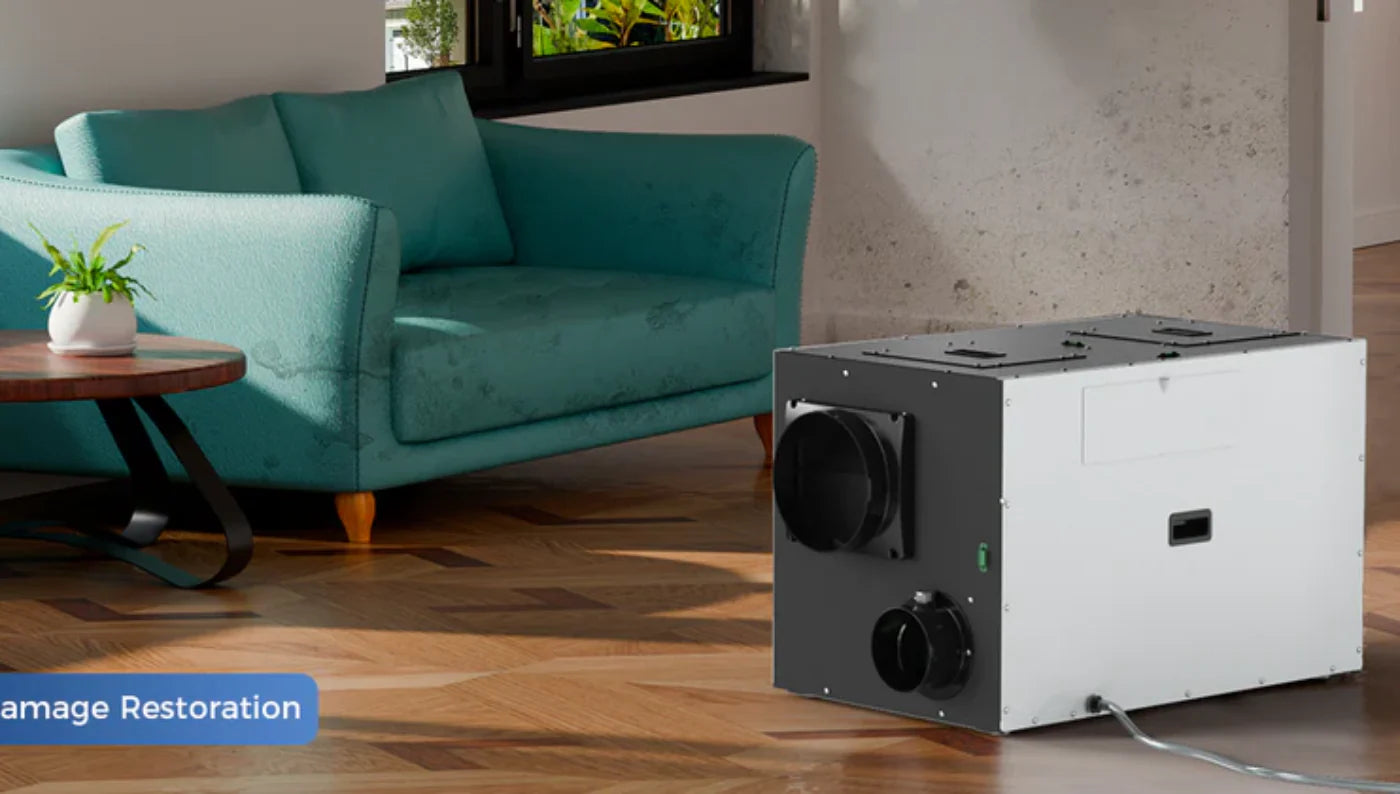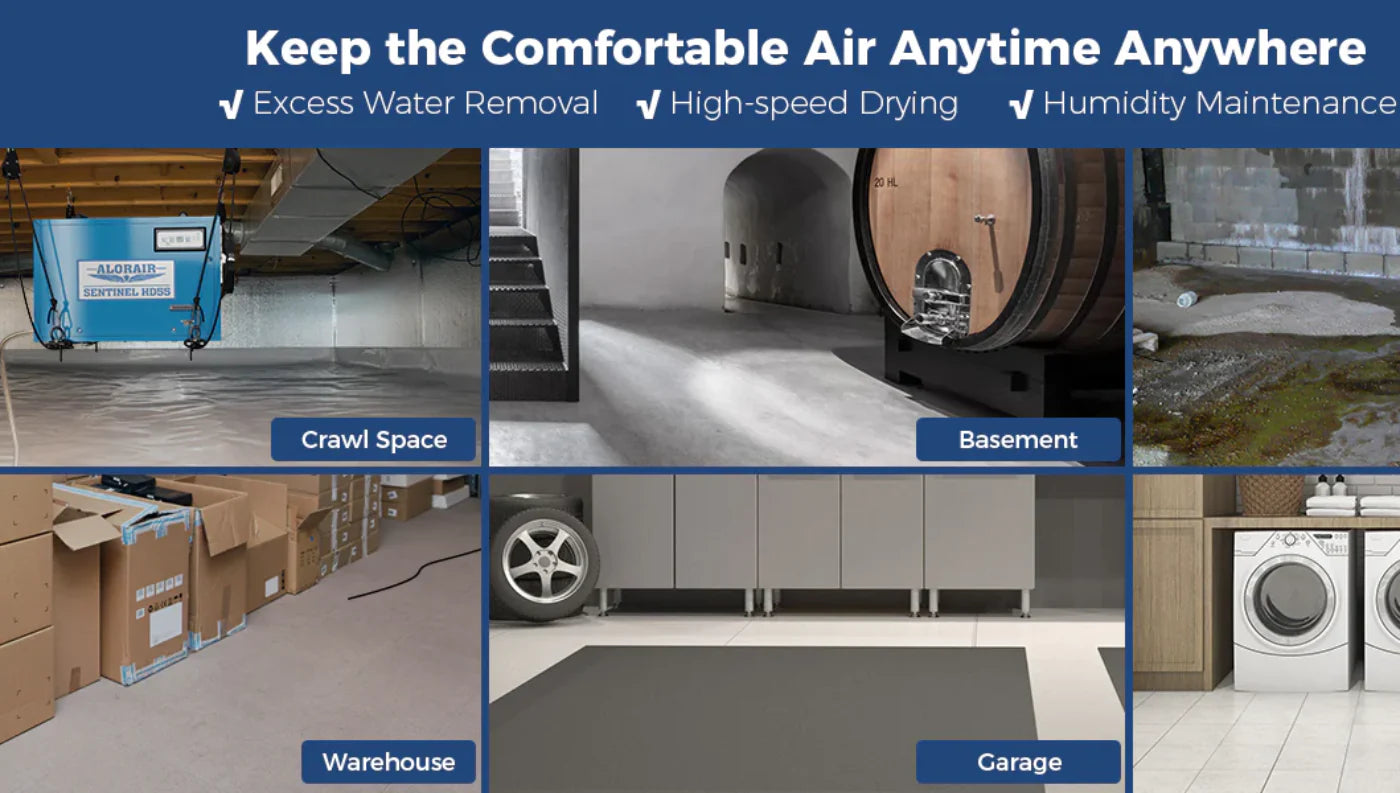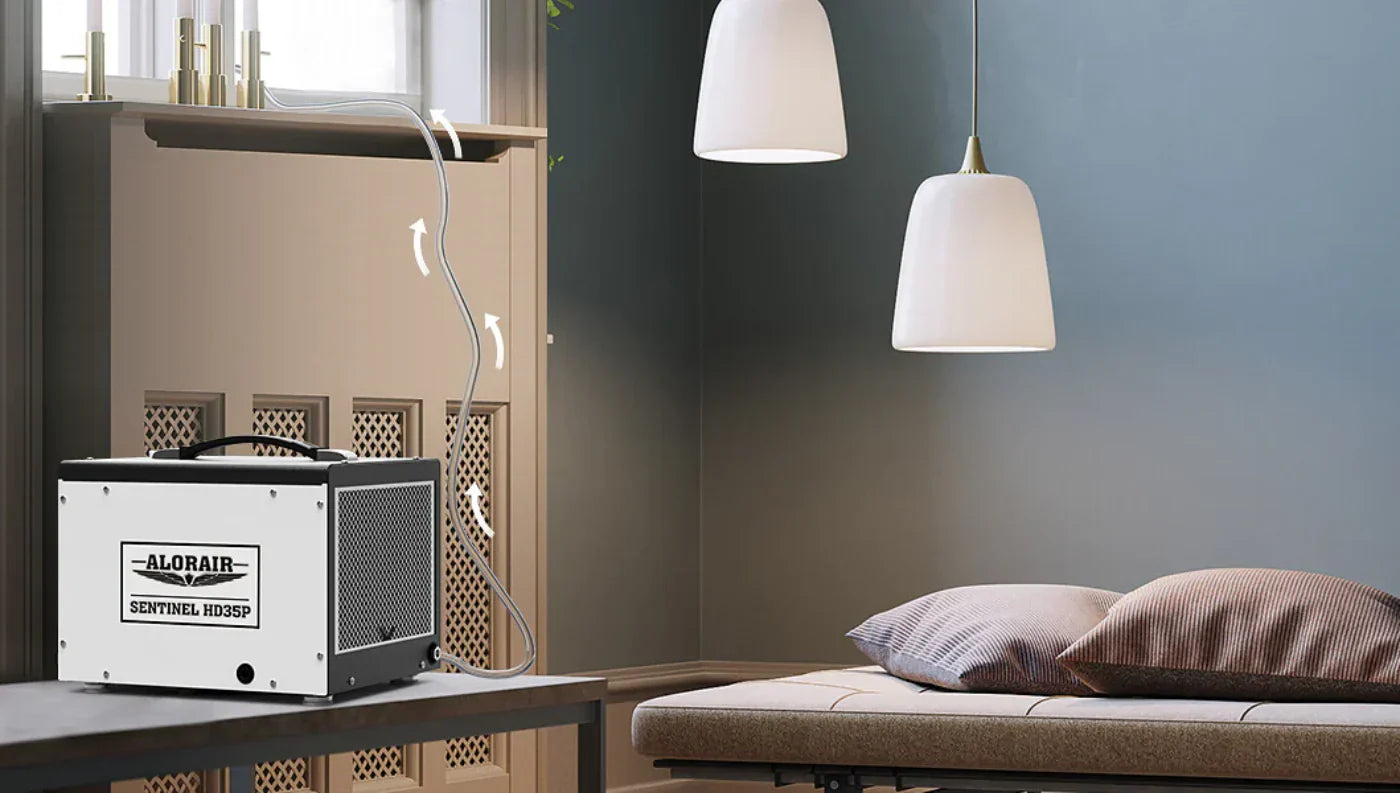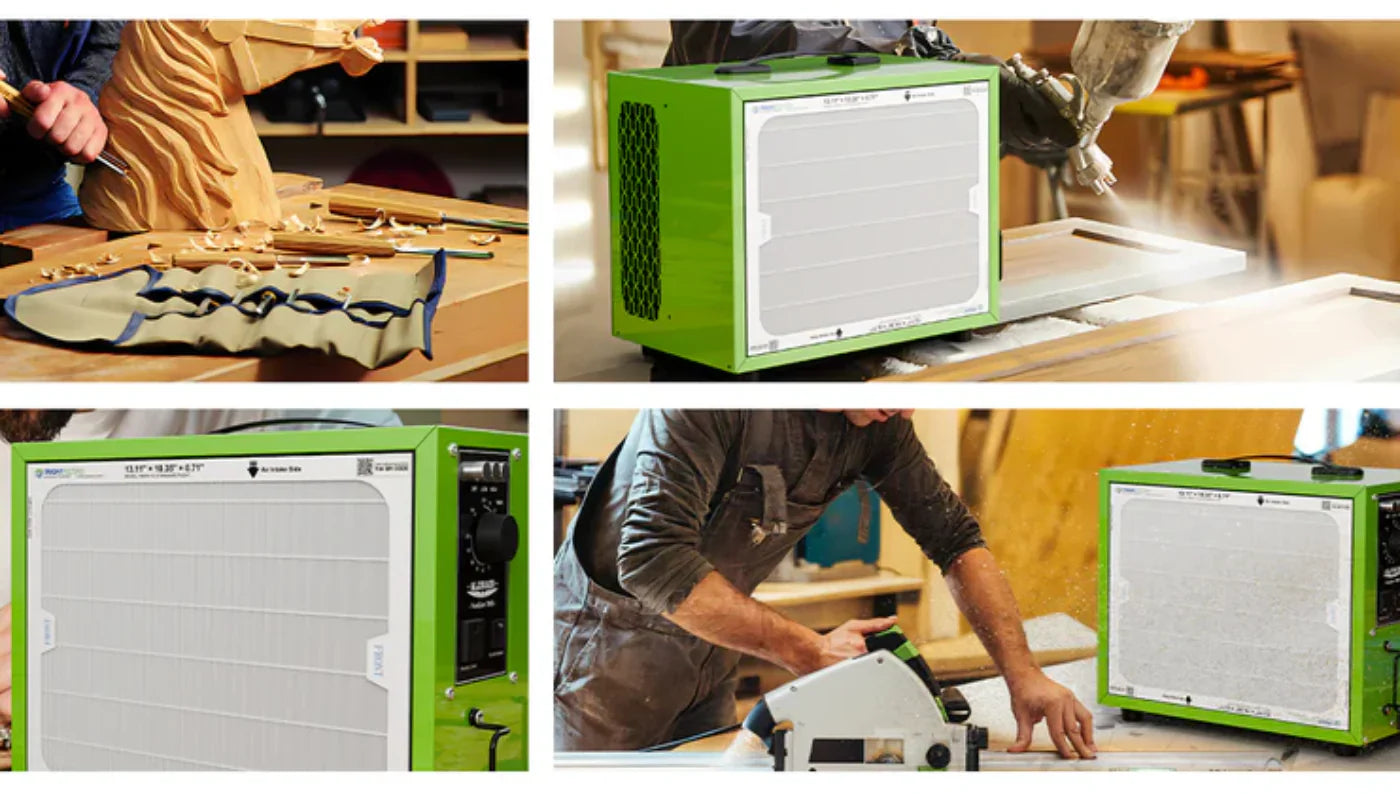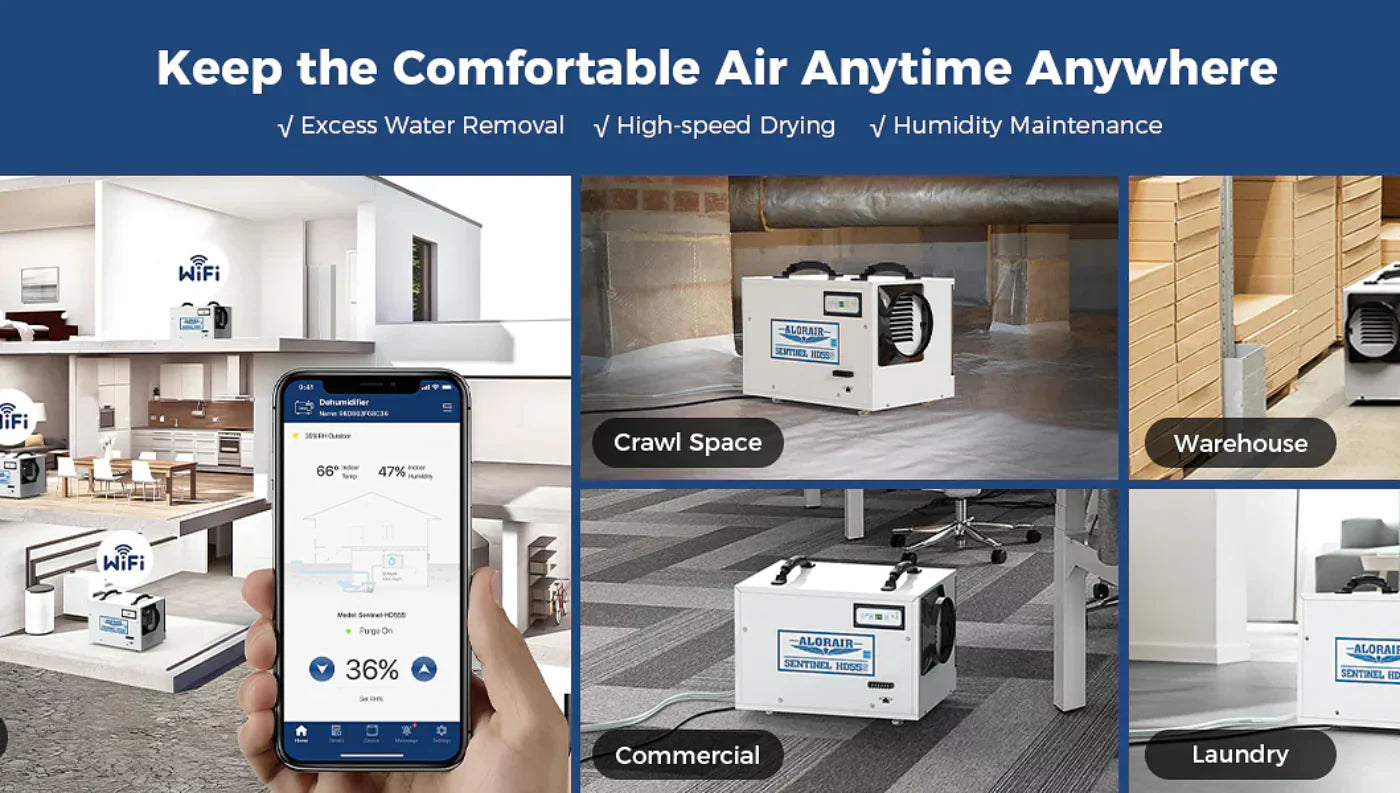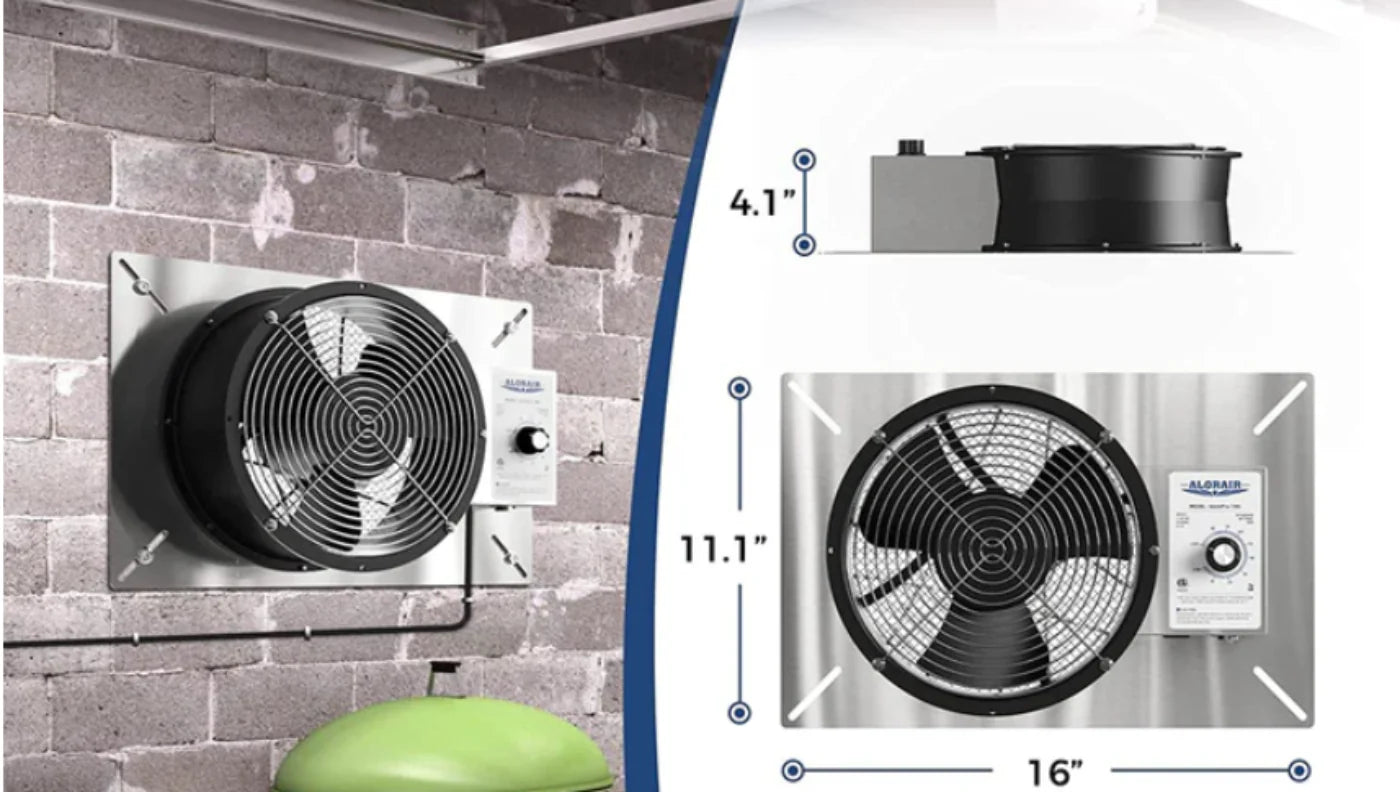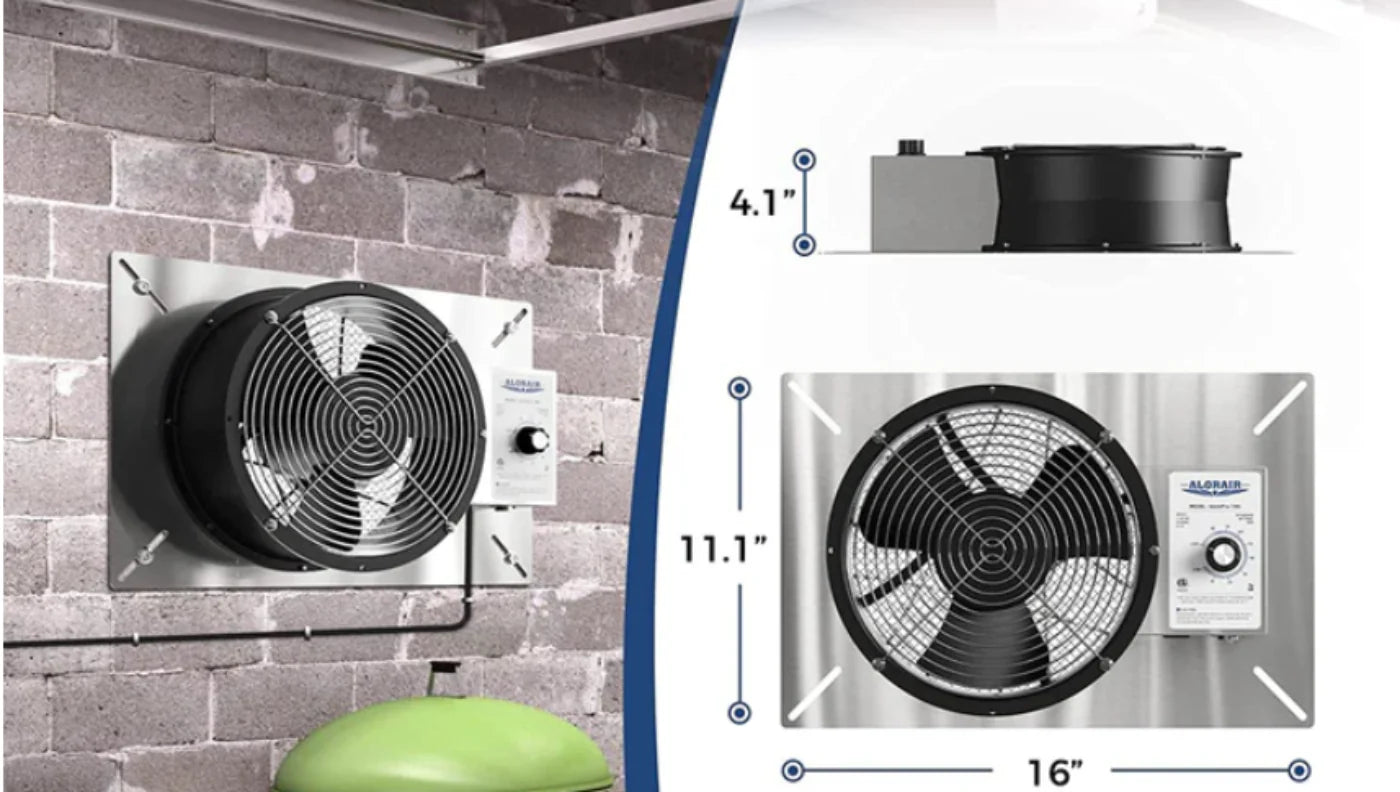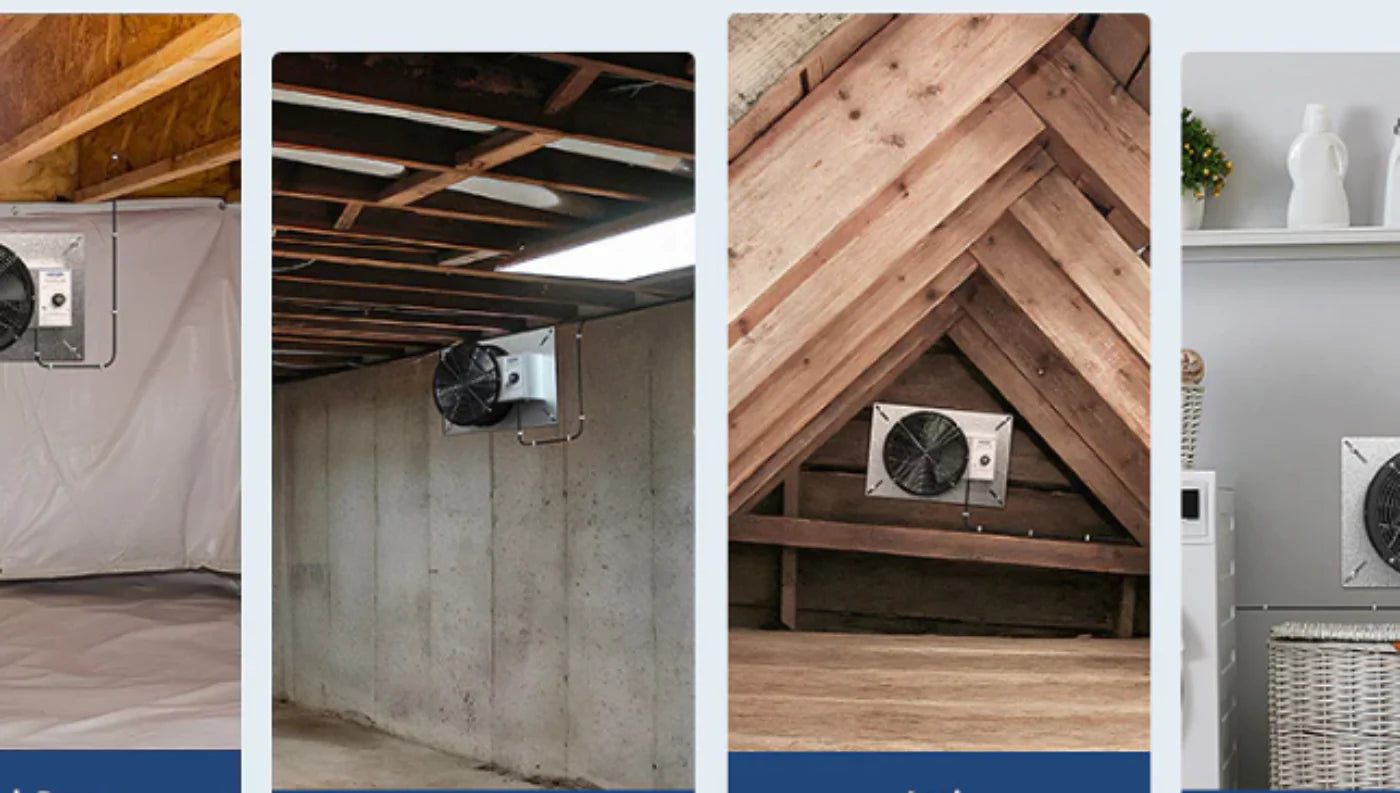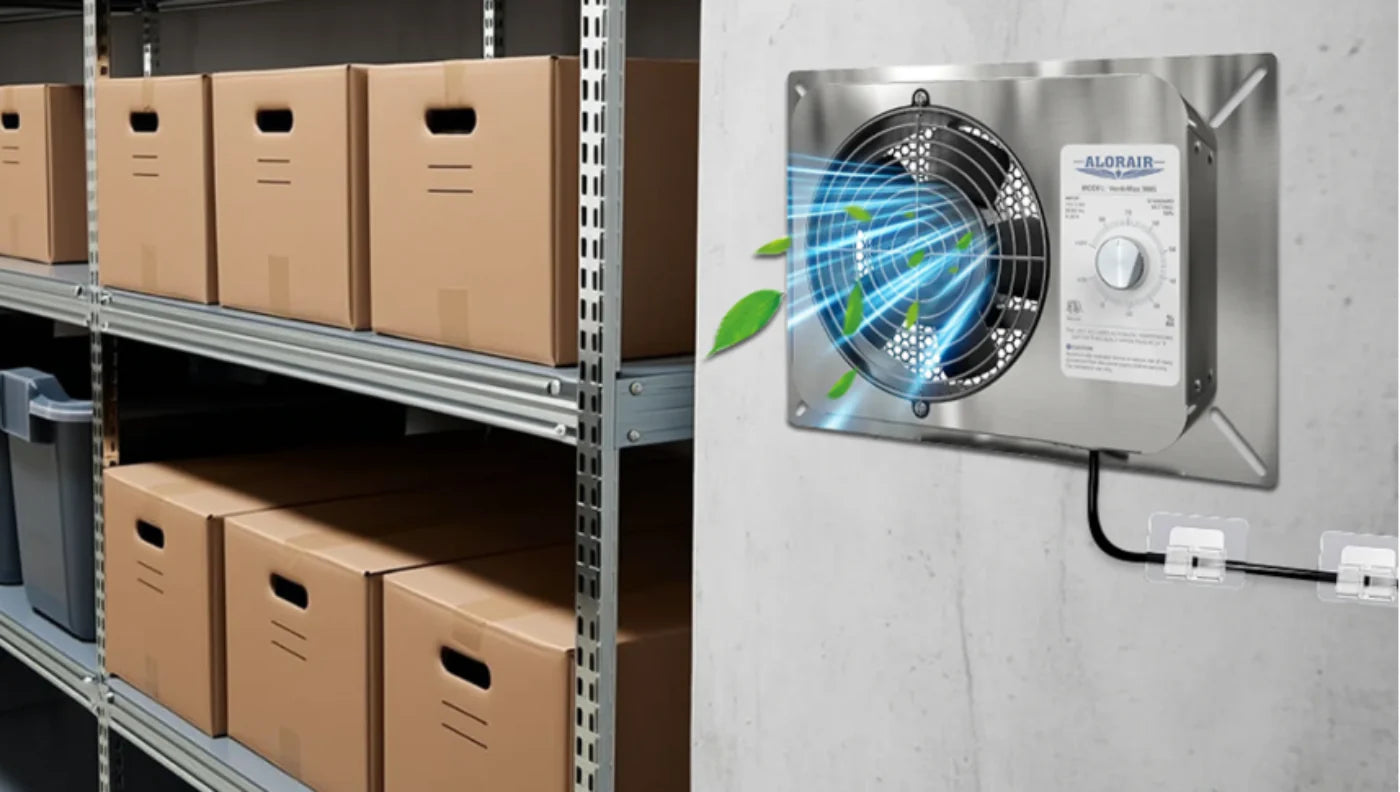Excessive indoor humidity isn’t just annoying. It can quietly damage your home, make you feel uncomfortable, and even harm your health. The signs are often easy to spot, from foggy windows to musty smells, but many homeowners overlook them until the damage is done. If you’ve ever felt sticky in your own home, struggled with allergies that won’t quit or noticed mysterious spots on your walls or ceilings, it’s time to investigate further. A whole house dehumidifier doesn’t just dry out one room. It controls moisture levels throughout your home, keeping indoor humidity at 30–50%.
This article explores the most common signs your home needs total humidity control. Whether your HVAC system isn’t cutting it or your home is just holding too much moisture, understanding these 6 signs can help you take action before things get out of hand.
1. Sticky, Damp or Uncomfortable Indoor Air

Have you ever walked into your home and felt clammy even with the AC on? That uncomfortable feeling is a clear sign your air has too much moisture. While air conditioners do remove some humidity, it’s not their main job, especially if your system is oversized or not operating efficiently.
Why Humidity Feels Worse Than Heat
You've perhaps opened the door into your house and found that you're greeted by a sticky, wet sensation even if the AC is running. The sticky, damp air is one of the first signs that your air conditioning is not removing the moisture as it should.
Unlike cooling, dehumidification is strictly a secondary benefit of air conditioners. If your AC is too big for your home (a common problem), it cools the space quickly and shuts off before it has time to remove enough moisture. This is what HVAC pros call “short-cycling”, which leaves you with cooler but still very humid air.
Health and comfort consequences
Excess humidity doesn’t just make you feel sticky. It influences the way your body is able to cool itself. When the air is full of moisture, your sweat can’t evaporate properly. In response, you end up feeling hotter at lower temperatures.
High humidity is sleep-disruptive as well. It makes one perspire more at night, keeps the bedding moist, and even decreases the duration of restorative phases of sleep. It's an environment that is conducive as well to allergens such as dust mites and mold that aggravate nighttime breathing and allergy attacks.
Whole house dehumidifiers operate in tandem with your HVAC system and continuously draw out excess moisture, leaving each area of your house dry and cozy, not merely cool.
2. Visible Signs of Moisture Buildup

It is one thing when air is sticky, but when water starts leaving physical evidence on your house's surfaces, the problem is getting serious. Look for condensation, peeling paint, or water stains, all of which are warning signs that your indoor humidity is too high.
Condensation of Windows and Walls
If you have foggy windows or see water drops on glass and mirrors, you’re seeing one of the more evident indications of excess indoor humidity. Condensation is what occurs when warm air with high moisture content makes contact with a cool surface, and it's how your house is telling you that the moisture is too high.
Eventually, such a condensation is liable to decay window frames and paint and create the ideal habitat for the growth of mildew.
Peeling paint and bubbling wallpaper
The walls also suffer. Brown streaks, peeling paint, and bubbling wallpaper all indicate that water is seeping into surfaces. Water becomes trapped between paint layers or behind wallpaper and makes the wallpaper pull away from the wall.
More disturbing is when the wallpaper starts peeling along seams. This usually means water is collecting behind the wall itself, which raises the potential for mold.
Water Stains on Ceilings and Floors
Water stains are one of the most distressing indications of moisture issues. On the ceiling, they tend to manifest as yellowish or brown spots. Though they are occasionally the consequence of a leaky roof, they might also stem from recurring indoor humidity and condensation.
Floors are not exempt either. Damp marks on carpets, stained wood, and vinyl that feel soft or spongy might occur. These signs should never go unnoticed because they usually indicate deeper problems brought on by long-term moisture.
3. Health and Allergy Symptoms That Won’t Go Away

Do you or your family members suffer from year round congestion, sneezing or irritated eyes especially indoors? High humidity turns your home into a perfect place for allergens such as mold, mildew, and dust mites to grow.
Respiratory Issues and Allergies
Do you or your family members sneeze, cough or have itchy eyes even when allergy season is over? Year round indoor symptoms often indicate humidity related air quality issues.
Dust mites, mold spores and bacteria thrive in environments above 50% relative humidity. For people with asthma or other respiratory conditions high humidity makes breathing harder and increases the likelihood of attacks or flare ups.
Nighttime Symptoms and Sleep Disruption
If symptoms get worse at night, coughing fits, sore throats upon waking or nasal congestion, your home’s humidity could be the culprit. Bedrooms with poor ventilation and excess moisture create ideal environments for dust mites and mold, which trigger allergy symptoms and sleep disruption.
Long Term Health Effects
Continuous exposure to humid environments doesn’t just cause discomfort it can lead to chronic sinus infections, frequent colds and even increase susceptibility to other respiratory illnesses. Children and elderly family members are most vulnerable.
A whole house dehumidifier reduces indoor allergen levels and creates a healthier breathing environment especially important in homes where medical conditions are a concern.
4. Mold, Mildew and Musty Odors
One of the most obvious signs of excess moisture is a musty smell, especially in basements, closets, bathrooms or crawl spaces. That stale, earthy smell comes from mold spores, which start to grow 24-48 hours after exposure to moisture.
The Hidden Dangers of Mold
One of the most severe indoor humidity risks is that of mold. It develops rapidly in wet, inadequately ventilated spaces and infests the rest of your building within 24 to 48 hours of exposure to water.
Mold commonly grows in places like attics, crawl spaces, basements, and behind furniture or walls. Alas, not all molds are obvious. Sometimes, the first signal is the pungent smell of mold.
Why That Musty Smell Matters
They're not just smelly. They're a chemical signal. Mold doesn't just give you unpleasant smells; it releases gases known as microbial volatile organic compounds (mVOCs) as it develops. Each time you notice them in the air, they're already active and dispersing spores.
Ignoring that odor can cause health issues and costly cleanup.
What Mold Can Do
Mold can lower indoor air quality, cause allergies, and make asthma symptoms worse. In extreme cases certain molds release toxins that affect neurological health. Financially mold infestations lower property values, require professional remediation and may result in insurance claims that increase premiums or be denied.
Whole home dehumidifiers attack the problem at the source by creating an environment where mold can’t survive. Maintaining a consistent indoor humidity below 50% stops mold growth before it starts.
5. Structural and Energy Efficiency Issues
Humidity not only affects the air quality but is also causing damage from the inside out. Excess moisture permeates into wood, insulation, and floors, compromising the structure of the building and requiring expensive repairs.
Damp crawl spaces and basements
Do you see water spots, water rings on walls in the basement, or an earthy odor? Crawl space and basement moisture are more prevalent than you might imagine and can quickly become an expensive structural repair.
Water seeps into the building through small crevices in the foundation or percolates up from the ground through capillary action. Inside the building, it does not remain contained. By a process known as the “stack effect,” this moist air is carried upwards and pervades the entire house.
Wood Rot and Pests
When wood absorbs water, it starts decaying. This can weaken the floor joists, support beams, and other essential components of your house's framework. When the moisture content of wood is above 20–30%, it rots and breaks down.
High humidities tend to attract pests such as cockroaches, termites, and silverfish. These pests prefer warm, moist conditions and easily infest basements, kitchen areas, and attics.
Your HVAC System Works Over Time
You might not even know that humidity directly impacts the efficiency of your heating and cooling system. Damp air is actually cooler in winter and warmer in summer and makes you turn up the thermostat. This means that your system uses more energy and operates more hours, raising your energy bills and usage.
A full home dehumidifier relieves the load on your HVAC system by keeping moisture levels stable, which translates into cost savings and equipment longevity.
Read Also: Are dehumidifiers worth it
6. Poor Ventilation in Key Areas
If your bathroom mirror stays fogged long after a shower or you notice steam in the kitchen after cooking your home likely lacks adequate ventilation. And in newer airtight homes this can be a big problem.
The Problem with Bathrooms and Kitchens
Bathrooms and kitchens generate the most indoor moisture. Lacking an acceptable form of ventilation (such as an exhaust fan), the steam of hot showers and boiling water is trapped indoors. Eventually, this produces mold behind the walls, water stains, and warped cabinets.
Every bathroom should have a fan rated for at least 50 CFM (cubic feet per minute) and kitchens should have range hoods that exhaust outdoors. But even with these features trapped moisture can still accumulate especially in larger homes.
Indoor Clothes Drying and Cooking Habits
If you’re drying laundry indoors that’s releasing pints of water into your air every load. Add boiling pasta or baking casseroles to your daily habits and you’re releasing gallons of excess moisture into your home every week.
In poorly ventilated spaces, this moisture builds up and leads to mold or condensation-related damage. A 90 pint whole-house dehumidifier balances moisture throughout the home, even in areas where ventilation is limited.
Modern Homes Trap Moisture
Energy efficient, airtight homes are great for saving money on heating and cooling but terrible at releasing indoor humidity. Double pane windows, dense insulation and air tight sealing reduce airflow trapping everyday moisture from cooking, bathing and even breathing.
A central dehumidifier helps modern homes maintain healthy air by regulating humidity across all rooms, not just areas with localized exhaust fans.
Conclusion: Whole Home Dehumidification is a Smart Investment
Excess moisture isn’t something to ignore. Left unchecked high humidity leads to mold growth, health issues, structural damage and inflated energy costs. While it’s easy to brush off foggy windows or occasional allergy symptoms they may be the early warning signs that your indoor air needs serious attention. A whole house dehumidifier gives you peace of mind by creating a stable comfortable environment throughout your home.
You’ll sleep better, breathe easier and protect your investment for years to come. As energy efficiency and health take center stage in 2025 and beyond managing indoor humidity is more important than ever. If you’ve noticed any of the six warning signs above it’s time to act. Don’t wait for mold, rising bills or constant discomfort to force your hand; installing whole home dehumidifier now can prevent far bigger problems later.




